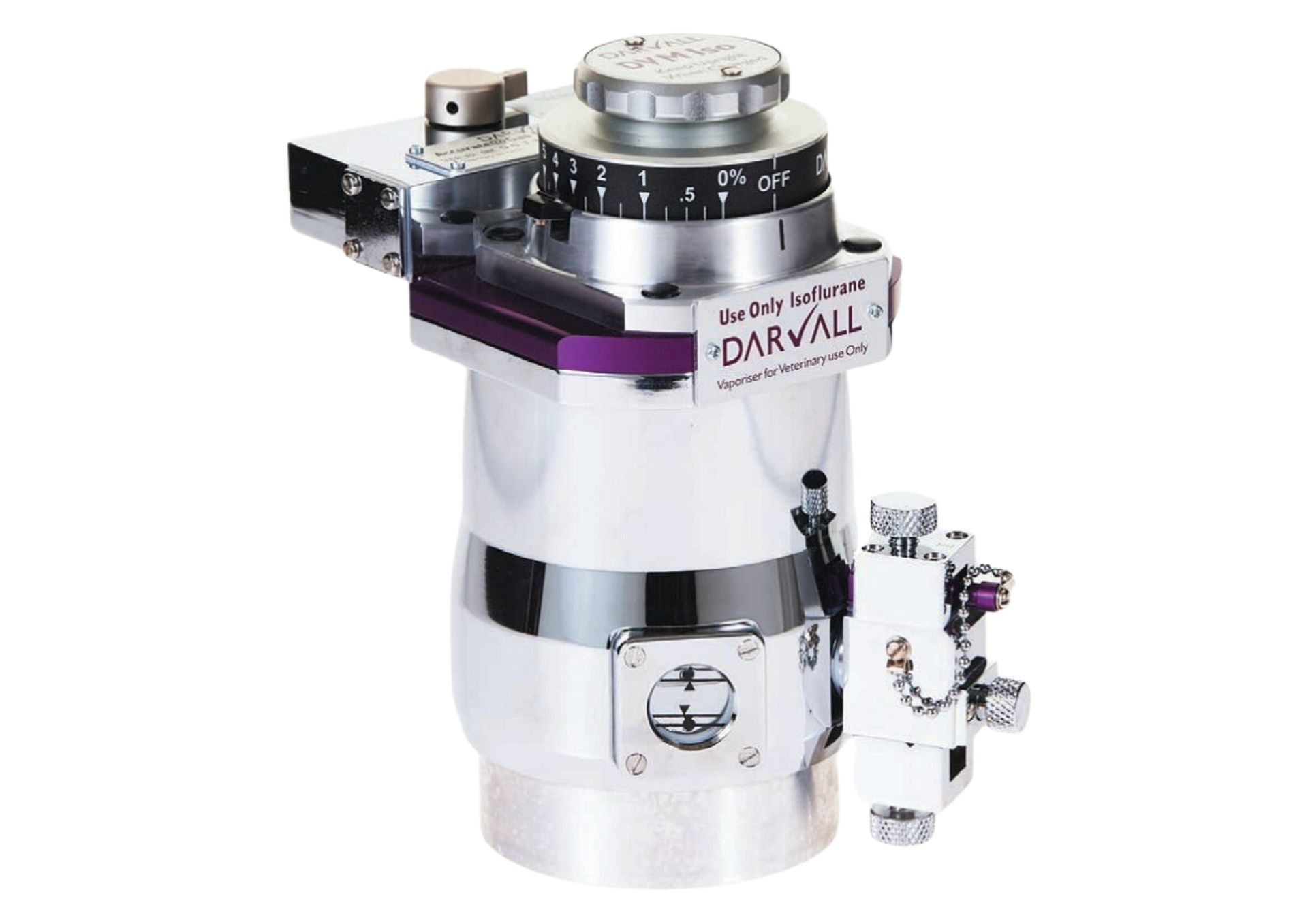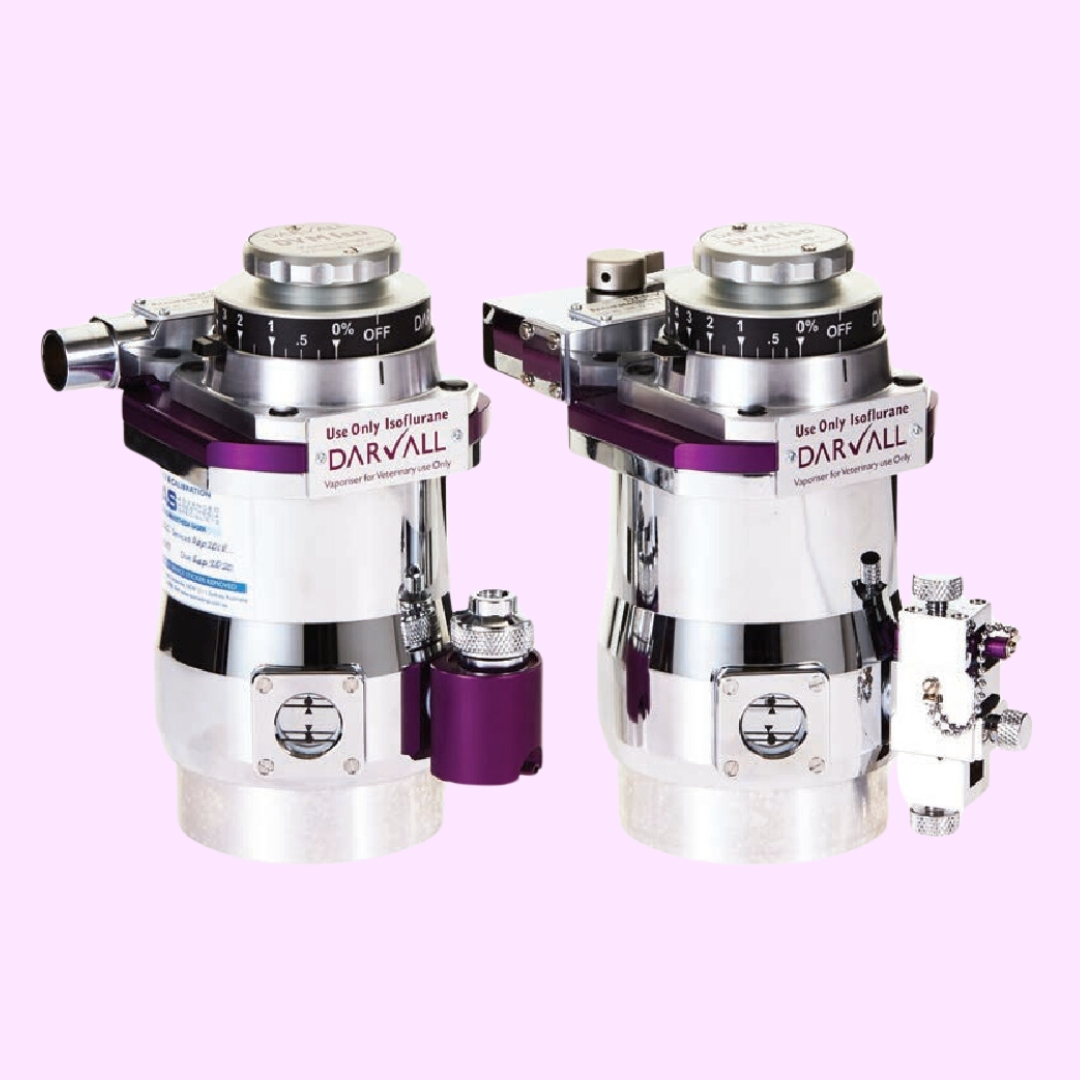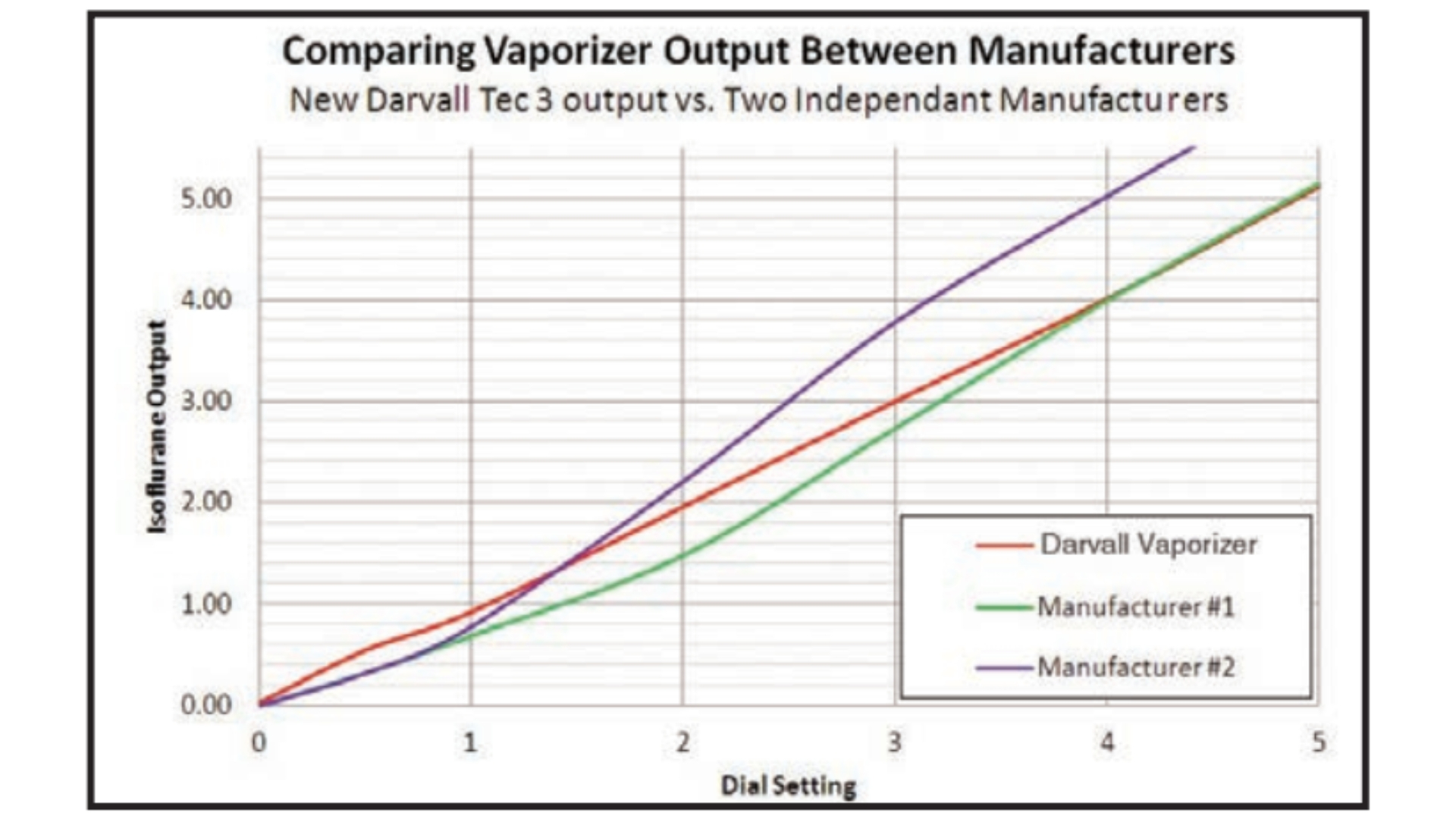Low Flow Vaporiser
Designed for accurate performance at gas flows to 200ml/min with 5 Year Service

Over 80% of anaesthetised animals are smaller than 15kg. Darvall's innovative breathing systems deliver predictable anaesthesia to these small animal at fresh gas flows of less than 1 L/min saving money, reducing hypothermia and lowering environmental WAG pollution.
The new Darvall DVM Iso vaporiser is unique, being the only vaporiser world-wide calibrated at 1 L/min and 3L/min to accurately perform at gas flows down to 200ml/min.
Low Maintenance 5 year Service Interval
Lightweight 3.5kg (standard Tec3=7kg )
Accuracy ±5% from 3.0 to 0.2 L/min gas flows
OH&S: Ceramic Coatings = Leakproof
Reduce Atmospheric WAG Pollution x 90%
5 Year Warranty (conditions apply)
Accurate, Light & 5 Year Service
DVM-Iso Precision Vaporiser

Vaporiser designed for accurate performance at low gas flows. Ideal for anesthesia of small animals.
- Calibrated at 1+3 L/min, tested at 200ml/min (Industry standard: 5 L/min)
- Darvall DVM Iso is the finest vaporiser yet produced for veterinary anesthesia in small animals.
- A proud joint venture with AAS Australian design and engineering, CNC-supported manufacturing by the finest British metal engineers, innovative precision metal coatings for long service interval, assembly by vaporiser craftsmen who still retain the black art passed down from the original manufacturer, Cyprane in Yorkshire, and zero tolerance calibration at 3.0 L/min gas flow using the knowledge gained by AAS from 15 years of vaporiser research, service, testing, and troubleshooting.
For over 5 years there has not been a new Tec 3 type vaporiser shipped to AAS from the UK, North America or China that has met Cyprane's specifications and been suitable for sale. We have had to completely disassemble and rebuild these vaporisers to get acceptable performance at standard veterinary O2 flows and be confident to assign our name and reputation to them... Well not anymore!

Vaporiser performance at 1 L/min. Output should be within 20% of the dial setting, particularly at the critical range of operation from 1% to 3% isoflurane.
